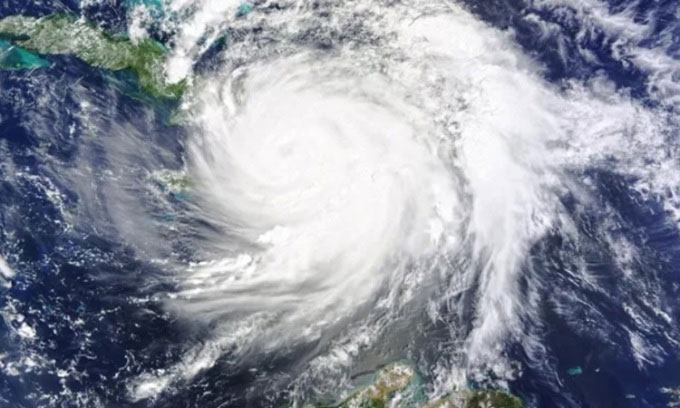How does the weather change from El Nino to La Nina?
El Nino will likely recede soon, signaling a rapid transition to the opposite climate and ocean pattern, La Nina .
The change from El Nino to La Nina brings the risk of major storms in the Atlantic and drier-than-normal weather in the southern United States. Globally, La Nina often causes temperatures to drop, but before its impact, 2024 was still in the top five hottest years in climate history, according to Tom Di Liberto, a scientist at the Bureau of Climate Change. US National Oceanic and Atmospheric Administration (NOAA). "All signs point to 2024 being a hot year , " Live Science on April 20 quoted Di Liberto as saying.

La Nina can lead to strong storms in the Atlantic like Hurricane Matthew landing in Haiti in 2016. (Photo: NASA).
El Nino and La Nina describe opposite patterns in the trade winds that move around the equator, blowing westward from South America to Asia. During a neutral year, when there are no patterns at play, the trade winds push warm water westward, pushing cold ocean water from the deep to the surface to replace it. When El Nino occurs, the trade winds weaken, so the eastern Pacific, along with the western coastal regions of North America and South America, will be warmer. As a result, the jet stream moves south, drying Canada and the northern United States but bringing more moisture to southern regions of the United States, according to NOAA.
During La Niña years, the trade winds strengthen, pushing warm water into Asia and enhancing the upwelling of cold water in the Pacific coastal regions of the Americas. The jet stream moves north, causing dryness in the southwest and southeast of the United States and bringing wetter weather to the northwest and Great Lakes.
El Nino officially operates from June 2023, but NOAA's Climate Prediction Center reports the climate pattern is weakening, with an 85% chance of transitioning to a neutral phase before June. After that, El Nino Nina will return, with a 60% chance of appearing between June and August, according to the National Centers for Environmental Prediction. "For an El Nino this strong, it is not uncommon for such an event to end and transition to La Nina quickly ," Di Liberto said.
Current ocean measurements show warm surface temperatures in the Pacific Ocean , but the water below is colder than average. As cold water rises to the surface, the transition will occur rapidly. The transition from El Nino to La Nina raises the risk of a strong hurricane season ahead , according to Alex DesRosiers, a doctoral student in atmospheric sciences at the University of Colorado. During El Nino, heat rises from the eastern Pacific Ocean into the upper atmosphere, leading to stronger winds at high altitudes. This creates vertical wind shear, a difference in wind speed and direction on the ground versus in the atmosphere. Vertical wind shear can fragment storms as they are forming.
During La Nina, winds in the upper atmosphere are calmer, reducing wind shear and allowing large storms to form through convection of warm, moist air from the sea surface. "As we move into La Nina, the climate becomes more favorable for storms to appear and strengthen ," DesRosiers said.
Due to the impact of the upcoming La Nina phenomenon and current extremely warm Atlantic surface temperatures, the CSU Tropical Weather and Climate Research Group predicts a very strong Atlantic hurricane season, with an estimated 23 storms named storms (higher than average of 14.4) and 5 storms were Category 3 or higher. This year may be similar to 2010 and 2020, both of which had active storm seasons, although it is uncertain whether strong storms will affect the mainland.
- The La Nina phenomenon may replace El Nino this year
- Why is the La Nina phenomenon so destructive to the planet?
- What is La Nina phenomenon?
- 'The phenomenon of La Nina will end globally
- WMO: La Nina's weather phenomenon is about to end
- El Nino is about to end in the Caribbean
- El Nino goes, La Nina comes
- The origin of the term El nino
- NASA: We are experiencing the peak of El Nino
- El Nino may stop working in the middle of this year
- La Nina weather phenomenon has reached its peak
- There is no link between El Nino and climate change
 Is the magnetic North Pole shift dangerous to humanity?
Is the magnetic North Pole shift dangerous to humanity? Washington legalizes the recycling of human bodies into fertilizer
Washington legalizes the recycling of human bodies into fertilizer Lightning stone - the mysterious guest
Lightning stone - the mysterious guest Stunned by the mysterious sunset, strange appearance
Stunned by the mysterious sunset, strange appearance